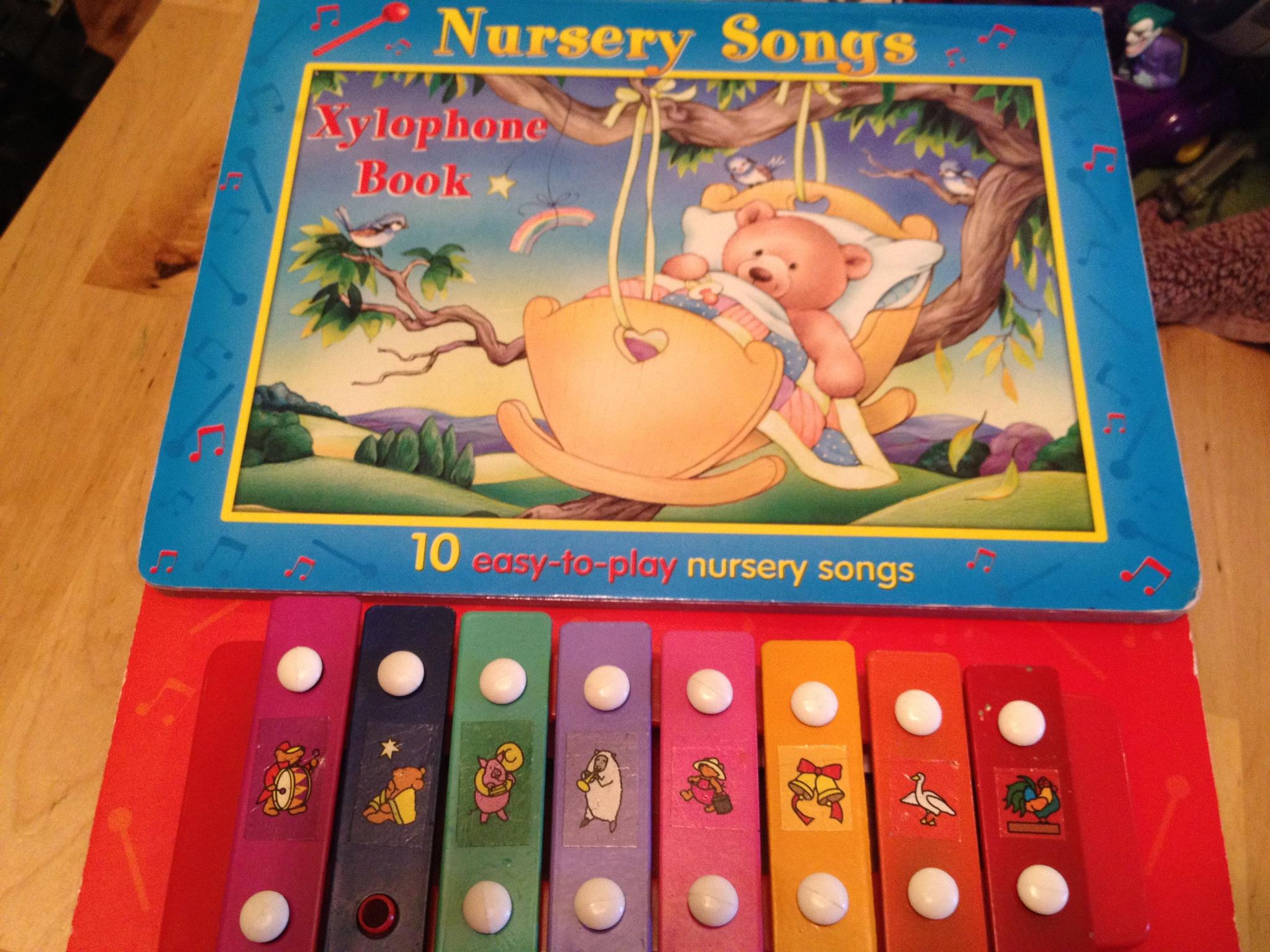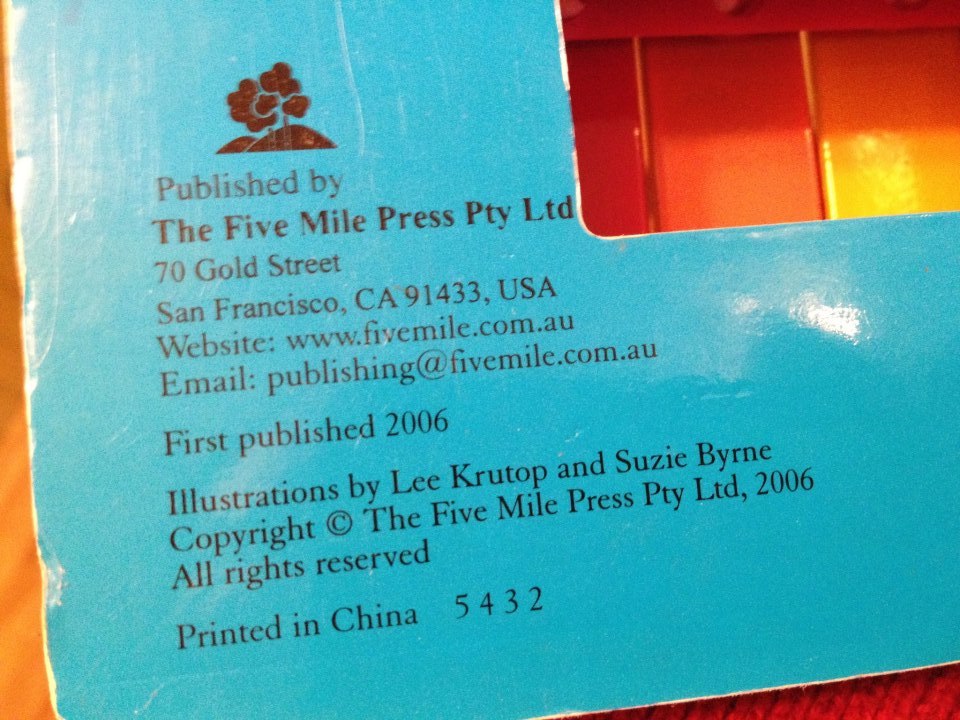2006 Nursery Songs Book With Built In Xylophone: 62,500 ppm Lead [90 ppm Lead is unsafe.]
Nursery Songs book with built in xylophone. First published in 2006 by The Five Mile Press Pty Ltd, e-mail: publishing@fivemile.com.au. Tested positive as high as 62,500 ppm LEAD!!!!!! (when tested with an XRF instrument.) The component that was the highest lead was the yellow xylophone key.
New legislation was signed and put in place in the United States in August of 2008 with the CPSIA – Consumer Product Safety Improvement Act (which was pushed through after the 2007 Thomas the Tank Engine lead paint recall.)
While the CPSIA was enacted in 2008 and was mostly enforceable by 2010, it still had a few loopholes (lags allowing for companies to be in full compliance as late as 2013.)
With this *new* legislation, items intended for children are now required to be less than 90 ppm lead in the coating and less than 100 ppm lead in the substrate.
When people ask me what year books for children became safe, I generally say 2011 and newer are your best bet (since it sometimes takes time for companies to get up to speed with legislation and also because I have never tested a 2011 and newer book that was positive for lead.)
While the book picture here was positive for a very high level of lead on metal components, I am actually equally concerned about some of the lower levels of lead that is often found in the paper components of vintage books (200 ppm, 500 ppm, 4000 ppm, etc.) because those are in the inks and paints on the pages and covers that move and the mere movement of those pages (especially if they are older) can create lead dust from normal use (outside of the concern for whether or not a child might put a book in their mouth, which they often do.)
As always, please let me know if you have any questions!
To see more books I have tested, click here.
Thank you for reading and for sharing my posts.
Sincerely,
Tamara Rubin
#LeadSafeMama
Never Miss an Important Article Again!
Join our Email List





The keys are supposed to be hit. This is likely, over time, to cause release of paint flakes. It is shocking that this could be sold as late as 2006.